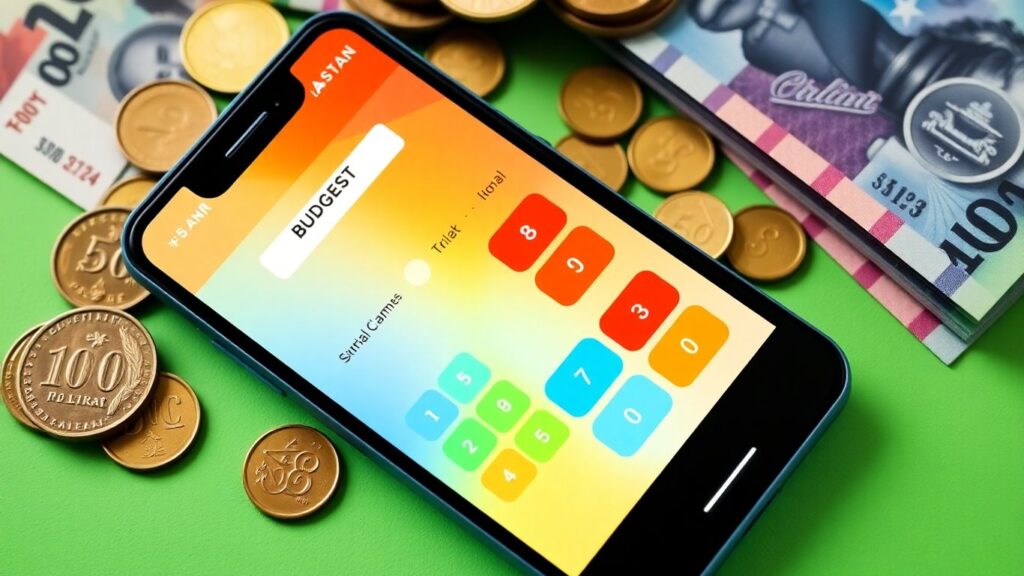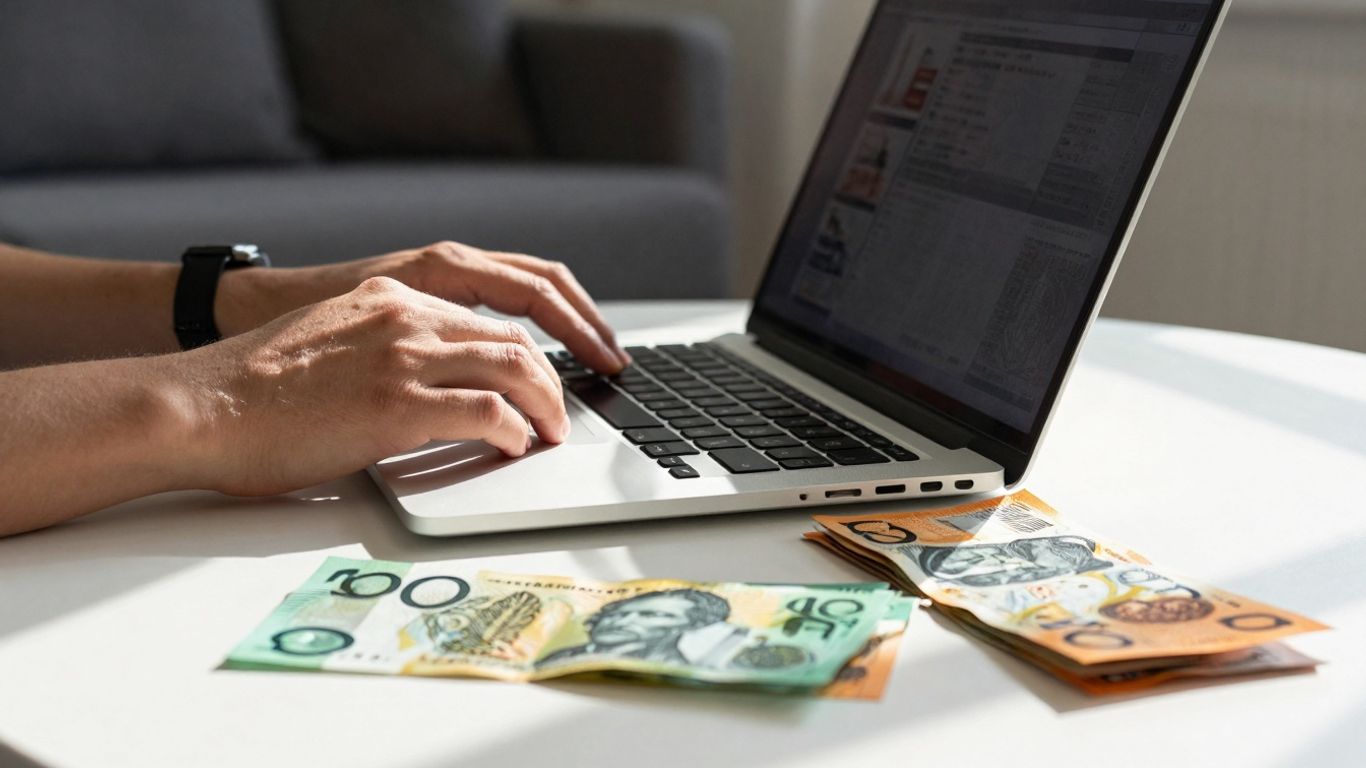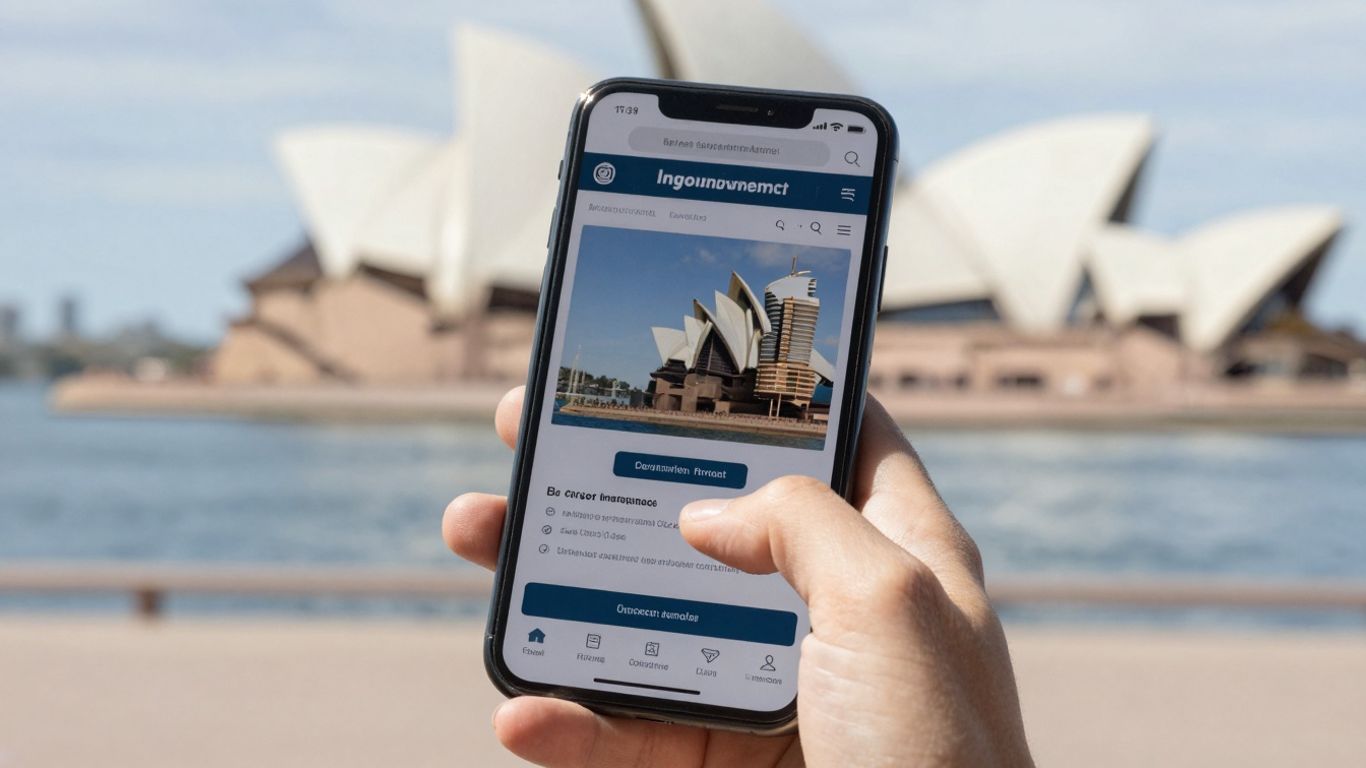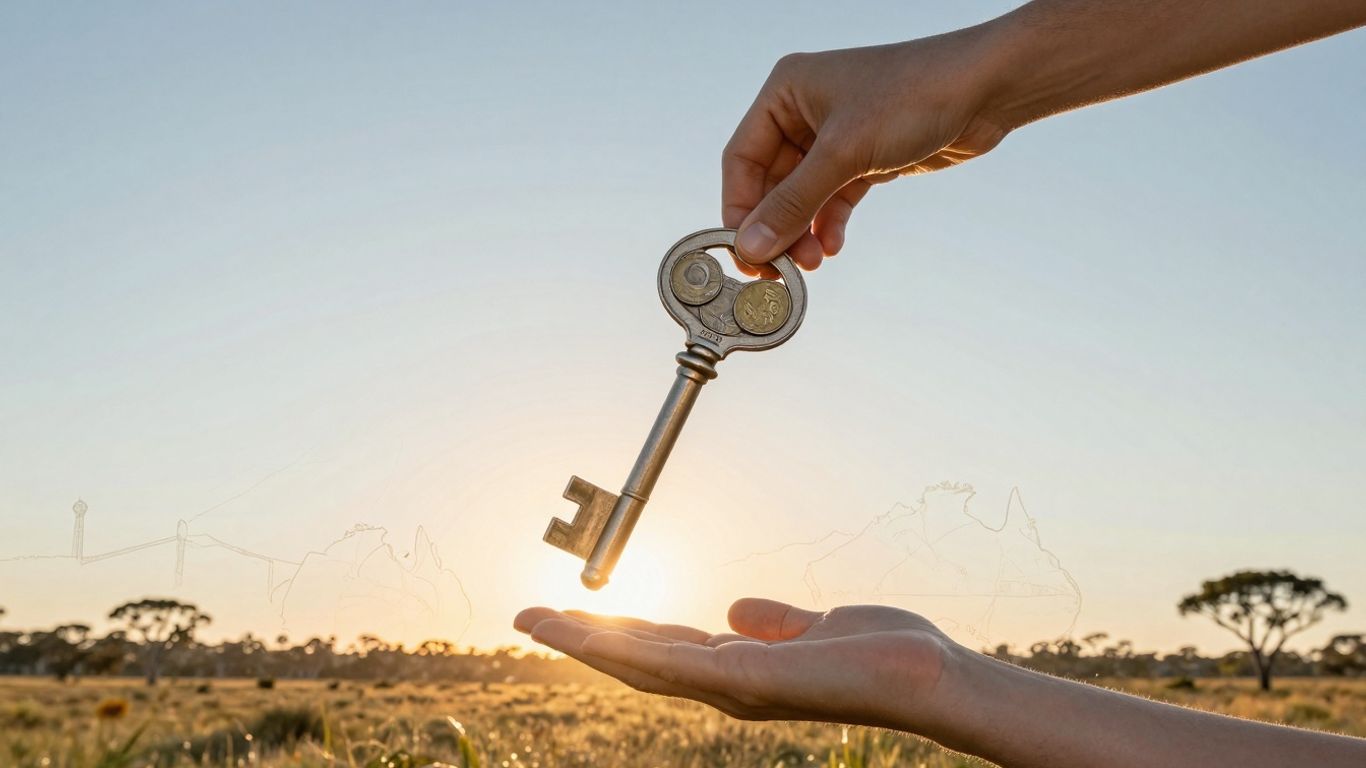Trying to get a handle on your money in Australia can feel like a bit of a puzzle sometimes, especially with everything costing more these days. Luckily, there are heaps of apps out there designed to make tracking your spending and saving a whole lot easier. We’ve looked at a bunch of them to find the best budget calculator app options for you in 2025. Whether you’re trying to save for a house, pay off debt, or just want to know where your cash is going, there’s probably an app that can help.
Key Takeaways
- WeMoney offers a free way to track all your finances, check your credit score, and even compare financial products to save money.
- Frollo is a sophisticated app that syncs with over 100 banks, helps you track bills, and provides insights to help you save.
- PocketSmith Sidekick is a good choice if you have bank accounts both in Australia and overseas, with both free and paid options.
- Goodbudget uses a simple envelope system to help you manage your spending, making it easy to see where your money is going.
- Your bank’s own app might have enough budgeting features for your needs, so it’s worth checking out first.
1. WeMoney
WeMoney is an Australian-made app that’s really trying to help folks get a handle on their finances. It’s not just about tracking where your money goes, but also about improving your overall financial health. It’s a free tool that lets you see all your bank accounts, superannuation, and even crypto in one spot. That’s pretty handy when you’re trying to get a clear picture of your net worth.
One of the standout features is its credit score monitoring. They reckon the average user sees a boost of about 63 points in just nine months, which is a decent chunk. Plus, it helps you keep an eye on your bills and even find those pesky subscriptions you forgot about and want to cancel. They also have a community aspect, which can be good for getting tips and support from others on a similar journey.
Here’s a quick look at what it offers:
- All-in-one account tracking: Connect your bank accounts, super funds, and crypto wallets.
- Credit score monitoring: Keep tabs on your credit health and see improvements.
- Subscription management: Identify and cancel unwanted recurring payments.
- Product comparison: Find better deals on things like insurance and utilities.
WeMoney aims to be more than just a budgeting app; it’s pitched as a financial wellness platform. This means it’s looking at the bigger picture of your money, not just the day-to-day spending.
While it’s free to use, which is a massive plus, remember that the real value comes from actively using its features to make informed decisions about your money. It’s a solid starting point for anyone in Australia looking to get more organised without spending a cent.
2. Frollo
Frollo is a pretty solid choice if you’re looking to get a handle on your finances here in Australia. It’s been around for a bit and has even picked up some awards, which is always a good sign, right?
What’s neat about Frollo is how it pulls everything together. You can link up with heaps of Australian banks – over 100, apparently – and get a clear picture of your savings accounts, super funds, and even home loans, all in one spot. It automatically sorts your spending into categories, which saves a bunch of time, and you can set up budgets and track your savings goals.
One of the standout features for me is the bill tracking. It gives you a heads-up before a bill is due, so no more nasty surprises. Plus, at the end of the year, it even gives you a ‘Frollo score’, which is basically your credit score. It’s a free app too, available on both Android and iOS, so there’s no barrier to entry.
Frollo really shines when it comes to giving you a clear overview of where your money is going without you having to do all the manual sorting. It’s designed to make managing your money feel less like a chore and more like a straightforward process.
Here’s a quick look at what Frollo offers:
- Connects to over 100 Australian banks: See all your accounts in one place.
- Automatic spending categorisation: Makes budgeting easier.
- Bill tracking and reminders: Avoid late fees.
- Savings goal setting: Helps you work towards your financial targets.
- Frollo Score: Get an idea of your credit health.
3. PocketSmith Sidekick
PocketSmith Sidekick, originally from New Zealand, has been around since 2008. It’s a pretty solid option if you’ve got finances spread across different countries, as it connects with over 10,000 financial institutions globally. This makes it a standout choice for Aussies with international accounts.
They offer a free basic plan, which is a good way to test the waters. With this free version, you can manually add your account details, set up to 12 budgets, and get a six-month financial projection. It’s not the most feature-rich, but it gives you a taste of what PocketSmith can do.
If you’re looking for more power, their paid plans, which range from about $8.25 to $21.95 per month, really open things up. You get automatic transaction imports, bank feeds, and automatic categorisation. Plus, you can get financial projections that stretch out for 10 or even 30 years, depending on the plan you choose. It’s also available as a handy mobile app for your PocketSmith iOS device.
Here’s a quick look at what the paid plans generally offer:
- Automatic and manual transaction imports
- Automatic bank feeds
- Automatic categorisation of spending
- Long-term financial projections (10-30 years)
- Unlimited budget creations
PocketSmith Sidekick is available on both Android and iOS, so most people should be able to use it on their preferred device. The app is compatible with Android 5 or later and iOS version 11.0 or later.
4. Goodbudget
Goodbudget is a bit of a throwback in the best way possible. It uses the old-school envelope budgeting system, which is fantastic if you’re someone who likes to see where every dollar is going. You set up virtual envelopes for different spending categories – think rent, groceries, entertainment – and then you allocate money to each one. It’s a really visual way to manage your cash.
This app is a great pick for beginners or anyone who finds traditional budgeting a bit overwhelming. It’s designed to be straightforward, which is a big plus when you’re just starting out on your financial journey.
Here’s a quick look at what you get:
- Envelope System: Assign funds to specific spending categories.
- Income Tracking: Keep an eye on what’s coming in.
- Savings Goals: Monitor your progress towards your savings targets.
- Debt Tracking: Helps you keep tabs on any outstanding payments.
Goodbudget has a free version that’s pretty generous, letting you create up to 10 envelopes and sync across two devices. If you need more, the premium plan is $8 a month or $70 a year, giving you unlimited envelopes and more devices. It works on both Android and iOS, so most people should be covered.
The beauty of Goodbudget is its simplicity. It doesn’t try to do too much, focusing instead on making the core budgeting process clear and manageable. This focus means you’re less likely to get lost in complex features and more likely to stick with your budget.
It’s a solid choice if you want a no-fuss way to get a handle on your spending and savings.
5. Humaniti
Humaniti is a personal finance app that aims to give you a clear picture of your money. It securely connects to your bank accounts, so you can see all your spending in one place. This makes it easier to figure out where your money is going and if you’re on track with your savings goals.
One of the neat things about Humaniti is that it automatically sorts your transactions into different categories. This takes a lot of the manual work out of budgeting. Plus, it helps you spot areas where you might be able to save a bit more cash. They also have a feature where you can earn a little extra money by doing surveys, which is a nice bonus.
Humaniti focuses on giving you a complete overview of your finances, from your everyday spending to your superannuation balances. It’s all about making money management less of a chore and more straightforward.
Key features you’ll find in Humaniti include:
- Secure Account Linking: Connects to over 100 Australian banks for a consolidated view.
- Automatic Categorisation: Sorts your spending automatically to simplify budgeting.
- Net Worth Tracking: Helps you understand your overall financial position.
- Survey Participation: An option to earn small amounts of money.
- Super Balance Comparison: Keep an eye on your superannuation funds.
Humaniti is free to download and use, available on both the Google Play Store and the Apple App Store, making it accessible for most smartphone users.
6. Your Bank App

Look, sometimes the simplest solution is right under your nose. Your own bank’s app might actually be all you need to get a handle on your budget. Most of the big Aussie banks, like CommBank, ANZ, and NAB, have built some pretty decent budgeting tools right into their mobile apps. They’ve been adding features like spending trackers, budget setting, and even cash flow overviews. It’s a pretty straightforward way to see where your money is going without having to sign up for yet another service.
Plus, there’s the practical side of things. If you’re travelling overseas, you might run into issues receiving text messages for two-factor authentication. Having your bank’s app handy means you can often bypass that hassle with a PIN generator or other in-app security features. It’s a good backup to have.
Here’s a quick look at what you might find:
- Spending Categorisation: See where your cash is going automatically.
- Budget Setting: Set limits for different spending areas.
- Account Overviews: Get a clear picture of your balances and transactions.
- Bill Reminders: Some apps even help you keep track of upcoming payments.
It’s worth taking a good look at what your current bank offers. You might be surprised by how much functionality is already available, saving you the trouble of downloading and learning a new app. It’s all about making things easier, right?
While they might not have all the bells and whistles of a dedicated budgeting app, for many people, especially those who keep most of their finances with one institution, their bank’s app is more than enough to manage day-to-day spending and keep savings goals in sight.
7. Buddy
Buddy is a pretty straightforward budgeting app that focuses on helping you get a handle on your spending. It’s not overly complicated, which is good if you’re just starting out or don’t want to get bogged down in too many features. The app lets you set up different budgets for various categories, like groceries, entertainment, or bills, and then you track your spending against those limits. It’s a classic envelope budgeting style, but digital.
One of the things people seem to like about Buddy is its clean interface. It’s not cluttered, so you can see where your money is going without too much fuss. You can also set up recurring transactions, which is handy for bills that come out every month. This means you don’t have to manually enter them each time, saving you a bit of hassle.
Buddy also has a feature for shared budgets, which is great if you’re managing finances with a partner or housemates. You can both contribute to and track a shared budget, making it easier to keep things fair and transparent. It’s a decent option if you’re looking for a simple way to manage your money and stay on track with your spending goals.
While Buddy doesn’t have all the bells and whistles of some of the more complex apps, its simplicity is its strength. It’s designed to be easy to use, so you can focus on the actual budgeting rather than figuring out the app itself. This makes it a good choice for people who want a clear overview of their finances without a steep learning curve.
Here’s a quick look at what Buddy offers:
- Budget Tracking: Set up custom budgets for different spending areas.
- Expense Logging: Easily record your daily expenses.
- Shared Budgets: Collaborate on budgets with others.
- Recurring Transactions: Automate entries for regular bills.
- Reporting: Get a visual overview of your spending habits.
Buddy is available on both iOS and Android, so most people should be able to use it. It’s a solid choice for basic budgeting needs, especially if you appreciate a clean and uncluttered design. You can find out more about budgeting apps to see how Buddy compares.
8. EveryDollar
EveryDollar is an app that comes from Dave Ramsey, a well-known name in personal finance. It’s built around a budgeting method called zero-based budgeting. Basically, this means you give every single dollar you earn a job to do, whether that’s spending, saving, or paying off debt. It’s a pretty straightforward way to get a handle on where your money is actually going.
The app has a free version, which is great for getting started, but if you want things like automatic bank syncing, you’ll need to look at their Premium plan. This paid version costs about $17.99 a month or $79.99 for the year. While the free version lets you set up your budget categories manually, the Premium version makes things a bit easier by connecting to your bank accounts. It also offers more detailed spending insights and helps with planning for paychecks.
Here’s a quick look at what you get:
- Zero-Based Budgeting: Assign every dollar a purpose.
- Customisable Budgets: Set up categories that make sense for your life.
- Spending Insights: Understand your spending habits better.
- Bill Reminders: Helps you avoid late fees.
While EveryDollar is a solid choice for those who like the zero-based method, it’s worth noting that automatic transaction syncing isn’t available in the free tier. This means you’ll be doing a bit more manual entry if you stick with the free option. It’s a trade-off for not paying a monthly fee, but something to consider based on your preferences.
On the app stores, EveryDollar generally gets good reviews. On Android, it’s rated around 4.3 out of 5 stars, and on iOS, it’s a bit higher at about 4.7 out of 5 stars. So, people seem to like using it, especially if they’re trying to get out of debt or save up for something specific. If you’re keen to try out Dave Ramsey’s budgeting method, EveryDollar is definitely worth a look.
9. Gather

Gather is pitched as an all-in-one money app, and it really tries to live up to that name. It’s designed to help you build wealth, which is a bit different from just tracking expenses. The app lets you connect to your Australian bank accounts, which is pretty standard these days, but it also goes a step further by letting you link your stock and cryptocurrency portfolios. This means you can get a much bigger picture of your financial health all in one spot.
It’s a good option if you’re looking to get a handle on more than just your day-to-day spending.
Gather aims to make organising, tracking, and growing your money feel less like a chore. It’s got features that are meant to be easy to use, so you don’t need to be a finance whiz to figure it out. Think of it as a central hub for your financial life, whether that’s your savings, your investments, or even your crypto.
Here’s a quick look at what it offers:
- Bank Account Sync: Connect your Australian bank accounts to see your transactions in real-time.
- Investment Tracking: Link your stock and crypto portfolios to monitor your wealth growth.
- Budgeting Tools: Set up budgets to keep your spending in check.
- Goal Setting: Define financial goals and track your progress towards them.
The idea behind Gather is to give you a clear overview of where your money is and where it’s going, with a focus on helping it grow over time. It’s about more than just balancing the books; it’s about building a solid financial future.
If you’re someone who dabbles in investments alongside your regular banking, Gather could be worth a look. It tries to bring everything together, making it simpler to manage your overall financial picture. You can find out more about how apps like this can help manage your finances on Gather’s website.
10. NomadWallet
Frequent travellers, listen up! NomadWallet is a pretty slick expense tracker that lets you sort your spending by trips, dates, or even currencies. When you open the app, you get a quick rundown of your journey, showing the total cost and how your spending stacks up day by day or destination by destination. It’s handy for seeing, for example, how much you’ve spent on average per day in Paris compared to Rome.
There’s also a calendar view that shows your month at a glance with daily spending totals. You can even spread a cost over multiple days, like a long-term accommodation rental, to get a clearer picture of the daily cost of a destination. Snap photos of your receipts and attach them to your entries. Custom categories help you see your overall spending in a nice pie chart.
The free version actually has most of NomadWallet’s useful features. A one-time fee of $5.99 USD unlocks custom categories, a visual spending overview, multi-currency support, sharing options, and CSV data export. It’s a solid choice for keeping tabs on your travel money without too much fuss.
NomadWallet is designed to help you effortlessly track all your expenses in one place, whether you’re travelling the world, living abroad, or just managing your daily spending. It’s a great tool for anyone who wants a clear overview of where their money is going, especially when dealing with different currencies or multiple destinations.
Here’s a quick look at what you get:
- Organise by Trip: Group expenses for specific holidays or business trips.
- Daily Spending Breakdown: See how much you’re spending each day.
- Receipt Photos: Attach images of your receipts for easy reference.
- Custom Categories: Tailor categories to your specific spending habits.
- Multi-Currency Support: Track expenses in various currencies.
NomadWallet is a good option if you’re often on the move and need a straightforward way to manage your money while abroad. You can download the app for iOS or Android.
Wrapping Up Your Budgeting Journey
So, there you have it! Finding the right budget app in Australia for 2025 doesn’t have to be a headache. Whether you’re just starting out and need something simple, or you’re looking for all the bells and whistles to track every dollar, there’s definitely an app out there for you. Many of these tools can even link up with your bank accounts, making it way easier to see where your money’s actually going. Don’t forget to check if your own bank’s app has some handy features too – you might already have what you need! Give a few a go, see what feels right, and get ready to take control of your finances. Happy budgeting, folks!
Frequently Asked Questions
What’s the best free budgeting app in Australia?
There are heaps of great apps in Australia that you can use for free! These apps give you full access to their features without needing to pay any subscription fees. Apps like WeMoney and Frollo are good examples that can sync with your bank accounts, making it easy to keep track of your money.
Can I use my bank’s app for budgeting?
Absolutely! Many Aussie banks, like CommBank, ANZ, and NAB, have built-in tools in their apps to help you track your spending, set savings goals, and manage your money. If you keep all your finances with one bank, their app might have all the features you need.
Which budgeting app is best for tracking expenses?
That really depends on what you’re looking for! Several apps are really good at tracking expenses, letting you see where your money goes. Some are free, while others have a cost. The best one for you will depend on your personal needs and what features you find most helpful.
Do budgeting apps work with Australian bank accounts?
Yes, most of the popular budgeting apps available in Australia are designed to connect securely with Australian bank accounts. This lets you see all your transactions and balances in one place, making it much easier to manage your money.
What is the ‘envelope budgeting’ method?
Envelope budgeting is a simple way to manage your money. You divide your income into different ‘envelopes’ for specific spending categories, like rent, groceries, or entertainment. Apps like Goodbudget use this method, making it easy to see how much you have left to spend in each area.
Are these apps safe to use with my bank details?
Yes, the apps we’ve looked at are designed with security in mind. They use strong security measures to protect your financial information. It’s always a good idea to use apps from trusted developers and to keep your phone’s security up-to-date.





